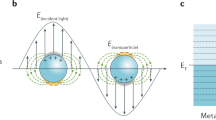Abstract
A SAMPLE of methanol lignin from Eucalyptus regnans1, purified by counter-current distribution and possessing the empirical formula (on the basis of a C9 unit) of C9H8.1O2.70(OCH3)1.86, was examined by means of the high-resolution nuclear magnetic resonance technique. This lignin was shown to contain approximately equal numbers of guaiacyl and syringyl units and to have been methylated to the extent of 0.41 methoxyl groups per C9 unit1. The spectrum (Fig. 1) of an approximately 10 per cent solution in deuterochloroform was recorded on a Varian model A60 spectrometer operating at 60 Mc/s and was calibrated in parts per million from tetra-methyl silane as internal reference2. The feature centred at 6.62 p.p.m. can be attributed to protons linked directly to aromatic nuclei and that centred at 3.85 p.p.m. to protons in methoxyl groups. When recorded under the same conditions the spectrum of vanillin showed the methoxyl feature at 3.88 p.p.m. and that of syringaldehyde at 3.93 p.p.m. In the foregoing empirical formula, hydrogen present as methoxyl accounts for about 41 per cent of the total, whereas the feature at 4.98–3.45 p.p.m. equals 46 per cent of the total. The remaining features are most likely to be mainly associated with protons attached directly to oxygen (hydroxyl groups) or to carbon atoms bearing negative substituents. Protons resonating at corresponding frequencies may be found in the spectra of lignans3,4. There is a striking lack of features upfield from 2 p.p.m. where most aliphatic and alicyclic methyl, methylene and methine protons would be expected to occur5. In general, the proton magnetic resonance spectrum appears to be in agreement with the type of structure predicted by Freudenberg8.
This is a preview of subscription content, access via your institution
Access options
Subscribe to this journal
Receive 51 print issues and online access
$199.00 per year
only $3.90 per issue
Buy this article
- Purchase on Springer Link
- Instant access to full article PDF
Prices may be subject to local taxes which are calculated during checkout
Similar content being viewed by others
References
Bland, D. E., Biochem. J., 75, 195 (1960).
Bhacca, N. S., Johnson, L. F., and Shoolery, J. N., NMR Spectra Catalog (Varian Associates, 1962).
Crossley, N. S., and Djerassi, C., J. Chem. Soc., 1459 (1962).
Sternhell, S. (unpublished results).
Jackman, L. M., Applications of Nuclear Magnetic Resonance spectroscopy in Organic Chemistry, Chap. 4 (Pergamon Press, New York, 1959).
Freudenberg, K., J. Polymer Sci., 48, 371 (1960).
Adler, E., Das Papier, 15, 604 (1961).
Fales, H. M., and Robertson, A. V., Tetrahedron Letters, No. 3, 111 (1962).
Author information
Authors and Affiliations
Rights and permissions
About this article
Cite this article
BLAND, D., STERNHELL, S. High-resolution Nuclear Magnetic Resonance Spectrum of a Methanol Lignin. Nature 196, 985–986 (1962). https://doi.org/10.1038/196985a0
Issue Date:
DOI: https://doi.org/10.1038/196985a0
Comments
By submitting a comment you agree to abide by our Terms and Community Guidelines. If you find something abusive or that does not comply with our terms or guidelines please flag it as inappropriate.



